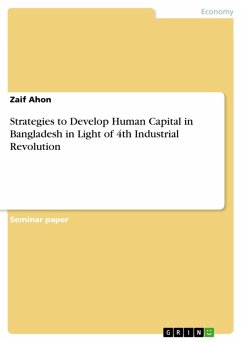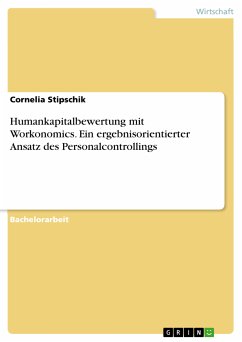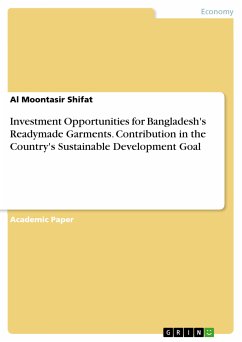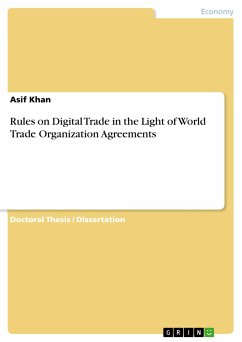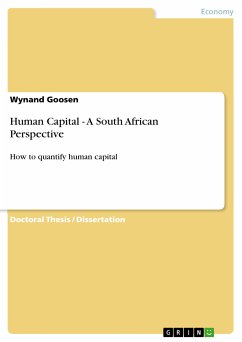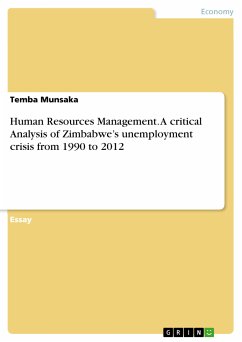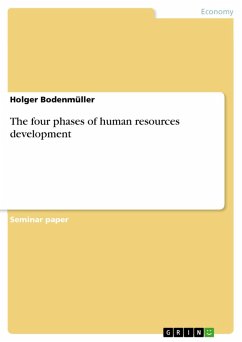Seminar paper from the year 2018 in the subject Leadership and Human Resources - Miscellaneous, grade: 4.0, University of Dhaka (Institute of Business Administration), course: International Business Environment, language: English, abstract: As the fourth industrial revolution blurs the physical and digital divide, its impact shall be perceived upon all levels of socio-economic, industrial, governmental and individual dimensions. In the context of ASEAN countries, the greatest threat to employment comes in the form of automation that will make the human resource redundant and replaceable particularly in China and Bangladesh: two of the leading manufacturing countries in the world. If we look at the current scenario, it can be obvious for us to deduce that Bangladesh is not taking much of an initiative towards the fourth industrial revolution. But there are plenty of ways the fourth industrial revolution can be utilized to develop human capital. Human capital development starts from as early as the childhood phase of the people as it represents skills, knowledge, and health that people accumulate over their lives. Encouraging livestock production will be helpful for child growth due to the increase in dairy production. Rather than a siloed approach, multisectoral coordination while taking initiatives, in nutrition interventions is effective. Family planning programs that enable birth spacing reduce demands on the low maternal nutrient stores in developing countries. We also should focus to collaborate with programs such as Jhilmili, Proshikkha, Brac Development Programs, UNICEF. While taking a look at the actual situation regarding education and unemployment, one finds a rather paradoxical relationship. Higher levels of education are associated with lower levels of unemployment in developed countries, but not so in developing countries. By introducing automation technologies, the yield of agriculture sector can be increased, this will ensure two things together, it will attract the technologically proficient people and make the sector lucrative enough towards being able to compete with lucrative jobs. We should also look to introduce vocational and technical education early in junior secondary school to encourage attaining dual qualification. For training development activities certification of skill or Apprenticeship (Dual Training System) has to be promoted). Besides, Branding strategies should be deviced specifically catered to the Labor Capital with campaigns like "We don't build beams; we build dreams."
Dieser Download kann aus rechtlichen Gründen nur mit Rechnungsadresse in A, B, BG, CY, CZ, D, DK, EW, E, FIN, F, GR, HR, H, IRL, I, LT, L, LR, M, NL, PL, P, R, S, SLO, SK ausgeliefert werden.

